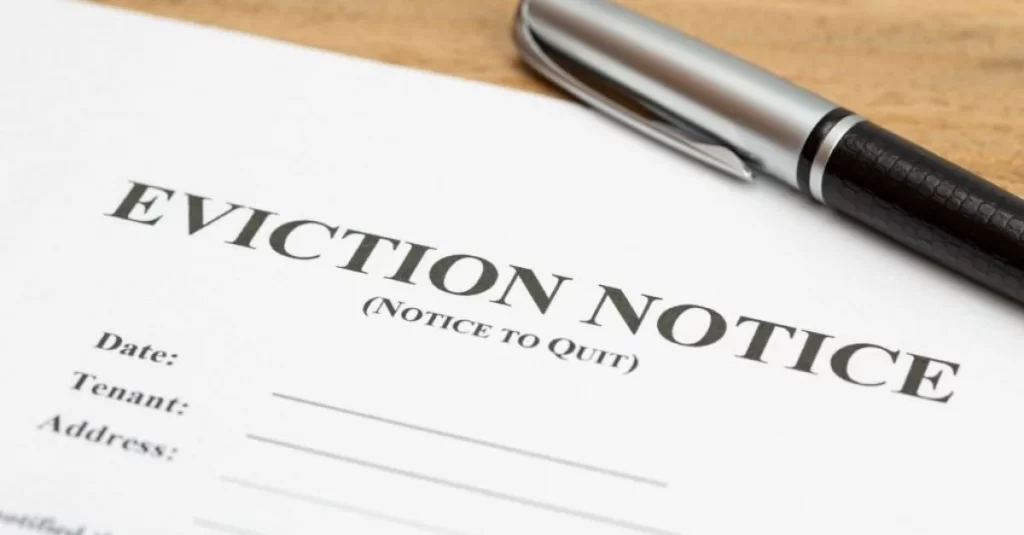
This is the first of a three-part blog series which explores: (i) the effectiveness of the moratorium on evictions, (ii) the lack of alternative housing available for households issued with eviction notices, and (iii) the over-reliance on the private rental market.
The moratorium on evictions came to an end on April 1st, 2023. This emergency measure was put in place in order to prevent people from entering homelessness and allow breathing space to ramp up emergency accommodation. As we enter the winter months, RTB data shows that record levels of eviction notices continue to be issued to tenants, while homeless figures continue to rise. Over a year has passed since the temporary moratorium on evictions was put in place. This blog reflects on how the situation has developed since.
This year alone, 15,006 households have received notices of termination from their landlords.
It is well known that there is an acute shortage of properties available to rent in Ireland, especially at an affordable price. Simon Communities of Ireland’s quarterly Locked Out of the Market report found just 27 properties available across Ireland within standard or discretionary Housing Assistance Payment limits. This is the lowest number recorded across the 31 Simon Communities’ Locked Out of the Market snapshot studies.
We are now facing the consequences of record numbers of eviction notices (displayed in the chart below) alongside a lack of alternatives in the private rental market.
The Effectiveness of the Moratorium on Evictions
The temporary eviction moratorium came into effect on the 31st of October 2022 and expired on the 31st of March 2023. Eviction notices could still be issued during the moratorium, although tenants could not be evicted until after the temporary measure ended. In the six months prior to the moratorium, the average monthly increase of homelessness stood at 2.1%, based on the total number of people accessing emergency accommodation. The highest monthly increase during this period was from September to October, when the number of people experiencing homelessness increased by 422 (3.8%). Child and family homelessness was increasing at a faster rate than the total homeless population over the same period, at a monthly average of 3.4%. Again, the highest monthly increase during this period took place from September to October, when 49 (4.5%) additional families became homeless.
During the moratorium on no-fault evictions (October 31st – March 31st), the average monthly increase fell from 2.1% in the six months prior to an average of 1% in the five months when the eviction ban was in effect.
When we look at child and family homelessness, this decrease was even more significant, from 3.4% to 0.5% over the same period.
Since the moratorium has been lifted, homeless figures continue to rise. The total number of people residing in temporary accommodation since the moratorium was lifted has risen by 920. There was an almost 6% increase in child and family homelessness between March and April when the ban was lifted. The average monthly increase since the moratorium was lifted to September of this year is 2.4%.
These insights highlight that although the moratorium on no-fault evictions did not reduce homelessness, it was successful in slowing the growth of homelessness, especially child and family homelessness. In order to successfully reduce homelessness, there needs to be a focus on both preventing people from entering homelessness, and ensuring that secure, affordable, and long-term accommodation is available for people to exit homelessness.
Exits from Homelessness
We can see from the analysis above that the temporary eviction ban made a more significant impact on the growth of family homeless compared to homelessness among single adults. This mirrors the effect of the Covid moratorium on evictions, when family homelessness fell by 39%. This section will concentrate on family homelessness, as the moratorium had the greatest impact on this category.
A key feature of the Covid moratorium that was missing from the temporary winter moratorium was the significant number of families exiting homelessness through both local authority housing and private rental (HAP). There was also a lower number of families presenting as homeless during this period. The graph above clearly shows the gap between the number of families exiting homelessness and the number of new families presenting as homeless since the beginning of 2022. As the above chart shows, the number of new families presenting as homeless reached its lowest point in Q4, when the temporary moratorium was in effect. Simultaneously during this period, there was a rise in exits, which explains the reduced growth of child and family homelessness during this period.
The gap between new presentations and exits from homelessness is resulting in a build-up of individuals and families living in emergency accommodation, causing homeless figures to rise every month despite presentations remaining relatively stable. The private rental sector is one of the primary drivers of new presentations to homelessness (see chart below), and the lack of supply in the private market means that the number of households exiting homelessness into the private market is decreasing. This will be explored further in the next blog.
From this analysis, we can conclude that although the eviction ban did not see a reduction in the total number of people in emergency accommodation, it did slow down the growth of homelessness, particularly among families. We continue to see rising numbers of people presenting as homeless, along with thousands of eviction notices issues by landlords, and a lack of supply in the housing market for people to exit homelessness. Although, the rate of growth has not returned the pre-eviction ban levels. This could be in part due to the rising number of people being prevented from entering homeless services. It is noted that a new homeless prevention scheme, ‘tenant-in-situ’ has been introduced by the government. The Tenant in Situ Scheme allows Local Authorities to buy properties where tenants are facing eviction when the landlord is selling the property. The Scheme applies to tenants with a valid Notice of Termination, deemed at risk of experiencing homelessness and who qualify for social housing support.
As mentioned previously, this blog is part of a series. Subsequent blogs will explore the lack of alternative housing available for households issued with eviction notices and the over-reliance on the private rental market.
Author: Rebecca Hamilton


